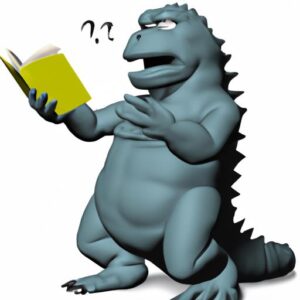Have you ever pondered upon the question, “is reading a verb?” We often associate verbs with actions such as running, eating, or dancing. But what about the act of reading? Is it merely a passive pastime, or does it possess the dynamism of a verb? In this article, we delve into the fascinating world of grammar to explore the true nature of reading and its place in sentence structure. So, let’s embark on this linguistic journey together and uncover the hidden verb within reading!
To begin, let’s understand what a verb truly signifies. In the realm of grammar, verbs are the powerhouse of sentences, conveying actions, conditions, or states. They act as the driving force that gives life to our words. Every sentence relies on a verb to establish meaning and coherence. Whether it’s expressing an action like “She runs,” a condition like “He is tall,” or a state like “They seem happy,” verbs are the cornerstone of effective communication.
Now, let’s address the main question at hand: is reading a verb? The answer lies in the essence of reading itself. When we engage in the act of reading, we actively process and comprehend written words, transporting ourselves to different worlds, gaining knowledge, and expanding our horizons. This very act of reading encompasses action, making it a verb. Just like running, eating, or dancing, reading involves mental activity and purposeful engagement. It is not a passive endeavor but an active one, stimulating our minds and broadening our intellectual capacity.
Consider the following example: “I am reading a captivating novel.” Here, “reading” functions as the verb, denoting the action of actively absorbing the content of a book. It is the driving force behind the sentence, imparting meaning and action to the words. Reading, in its essence, is an action we consciously undertake, making it undeniably a verb.
In conclusion, the act of reading indeed falls under the realm of verbs. It is an active engagement that stimulates our intellect and propels us into new realms of knowledge. So, the next time you embark on a literary adventure, remember that reading is not merely a passive pursuit but a dynamic verb, breathing life into the written word. Let us embrace the power of reading as a verb and celebrate its ability to shape our thoughts, perspectives, and ultimately, our lives.
Understanding Verbs
The backbone of language lies within the realm of verbs. Let’s delve deeper into their significance and unravel the various types that exist.
Defining Verbs and Their Language Function
Verbs can be defined as words that denote actions, conditions, or states. They bring life and movement to our sentences, allowing us to express ourselves effectively. Without verbs, our language would lack the vigor and dynamism to convey our thoughts and emotions. By infusing our sentences with verbs, we create a tapestry of meaning, painting vivid pictures with our words.
Different Types of Verbs
-
Action Verbs: These verbs depict physical or mental actions. They vividly showcase activities such as “run,” “think,” or “laugh.” Action verbs provide a clear representation of what is happening or being done.
-
Linking Verbs: Unlike action verbs, linking verbs serve to connect the subject of a sentence with additional information or descriptions. Common linking verbs include “be,” “appear,” and “seem.” They establish a relationship between the subject and its characteristics or state.
-
Helping Verbs: Helping verbs, also known as auxiliary verbs, assist the main verb in expressing various aspects such as tense, mood, or voice. Examples include “have,” “will,” and “can.” They work in conjunction with action or linking verbs to convey more nuanced meanings.
The Importance of Verbs in Conveying Actions or States
Verbs play a pivotal role in capturing the essence of actions and states within our language. They bring life to our sentences, enabling us to vividly depict events, describe conditions, or express ongoing activities. By utilizing the appropriate verb, we can convey a wide range of emotions, intensities, and nuances in our communication. Verbs empower us to move beyond mere descriptions and actively engage our audience, making our words leap off the page and resonate in their minds.
In essence, verbs are the lifeblood of language. They allow us to express actions, conditions, and states, weaving a rich tapestry of meaning. By understanding the different types of verbs and their functions, we unlock the potential to communicate effectively and leave a lasting impact on those who engage with our words. So, let us embrace the power of verbs and harness their potential to craft compelling narratives and thought-provoking ideas.
Verbs and Language Structure
Understanding the structure of language and the role of verbs within it is essential to comprehend the significance of reading as a verb. Let’s explore how verbs shape sentence formation, impact subject-verb agreement, and enable us to express time, tense, and mood effectively.
Sentence Structure and the Role of Verbs
In the realm of language, sentences are the building blocks of communication. They consist of various components, with verbs playing a pivotal role. Verbs serve as the backbone of sentences, providing the action or state that drives the meaning. Without a verb, a sentence lacks coherence and fails to convey a clear message. For instance, consider the incomplete sentence, “The cat.” It lacks a verb, leaving us puzzled about what the cat is doing or its state.
Subject-Verb Agreement and Its Impact on Sentence Formation
Subject-verb agreement is a fundamental aspect of grammar, ensuring that the subject and the verb in a sentence align correctly. This agreement establishes harmony and clarity within sentences. The verb must agree with the subject in terms of number (singular or plural) and person (first, second, or third). For example, in the sentence “She reads books,” the singular subject “she” is paired with the singular verb “reads.” This agreement ensures that the sentence is grammatically correct and conveys the intended meaning accurately.
Expressing Time, Tense, and Mood with Verbs
Verbs also play a crucial role in expressing time, tense, and mood in sentences. By modifying the verb, we can indicate when an action occurred, whether it is happening presently, or if it will happen in the future. The correct use of verb tenses allows us to convey a sense of time and provide a clear timeline of events. For example, “I read a book yesterday” indicates a past action, while “I am reading a book” signifies an ongoing action in the present.
Moreover, verbs also help us communicate the mood or attitude of the speaker. Whether it’s expressing certainty, possibility, obligation, or desire, verbs allow us to convey the intended tone. For instance, “I must read this book” conveys a sense of obligation, while “I wish to read this book” expresses desire.
In summary, understanding the role of verbs in language structure is crucial to grasp the essence of reading as a verb. Verbs form the foundation of sentences, ensuring coherence and conveying meaning. Subject-verb agreement ensures grammatical accuracy, while verb tenses and moods enable us to express time, tense, and attitude effectively. By appreciating the significance of verbs, we gain a deeper understanding of the dynamism that reading brings to our linguistic endeavors.
Is Reading a Verb?
Analysis of the word “reading” and its characteristics
Let’s delve deeper into the word “reading” and explore its characteristics that classify it as a verb. When we analyze the word itself, we find that “reading” aligns with the structure and attributes of verbs. It possesses the ability to express actions or activities, which is a fundamental quality of verbs.
Explanation of how “reading” functions as a verb
The function of “reading” as a verb becomes evident when we observe its role in sentence construction. It serves as the main action or activity being performed by the subject. For instance, consider the sentence, “She enjoys reading.” Here, “reading” functions as the verb, conveying the action being performed by the subject “she.” It signifies an active engagement in the act of reading, reinforcing its status as a verb.
Examples showcasing “reading” as an action or activity
To strengthen our understanding, let’s explore further examples that illustrate “reading” as an action or activity. Take the sentence, “I spend my evenings reading inspiring stories.” In this case, “reading” serves as the verb, depicting the action of actively engaging with inspiring stories during the evenings. It is a conscious activity that requires mental involvement and participation, solidifying its role as a verb.
Another example would be, “They are reading the latest bestseller.” Here, “reading” acts as the verb, signifying the ongoing action of actively consuming the content of the latest bestseller. The individuals mentioned are actively involved in the act of reading, making it a verb that characterizes their current activity.
In summary, the word “reading” showcases the essential characteristics of a verb. Its ability to express actions or activities, its function within sentence structure, and its portrayal as an active engagement all point to its classification as a verb. Through various examples, we witness the dynamic nature of “reading” as an action or activity, further affirming its verb status. So, the next time you immerse yourself in a captivating book, remember that “reading” is indeed a verb, encapsulating the essence of your active involvement in the literary journey.
Common Misconceptions about “Reading” as a Verb
Addressing Misconceptions or Debates
When it comes to the question of whether reading is a verb, there are common misconceptions and debates that arise. Some individuals argue that reading is purely a passive activity, devoid of the action typically associated with verbs. However, it is important to address these misconceptions and shed light on the true nature of reading as a verb.
Explaining Why “Reading” Fulfills Verb Criteria
To understand why reading fulfills the criteria of a verb, we must consider its characteristics. Verbs are words that express actions, conditions, or states. Reading, in its essence, encapsulates the action of mentally processing written text, actively engaging with the material. It involves concentration, comprehension, and interpretation—all fundamental aspects of an action. By fulfilling these criteria, reading undoubtedly qualifies as a verb.
Refuting Arguments against “Reading” Being a Verb
Some may argue that reading cannot be classified as a verb because it lacks the traditional physicality associated with action verbs. However, verbs encompass more than just physical movements. They encompass mental activities, emotions, and states as well. Reading, being a mental activity that requires cognitive processing, fits within this broader definition of verbs.
Additionally, skeptics may claim that reading lacks the transitive or intransitive properties typically found in verbs. However, verbs can exhibit a range of transitivity, and reading is no exception. It can be both transitive, as in “She is reading a book,” and intransitive, as in “He loves reading.” The versatility of reading as a verb is evident in its ability to accommodate various sentence structures and contexts.
In conclusion, the misconceptions surrounding reading as a verb can be debunked by acknowledging its active nature and fulfillment of verb criteria. Reading is an engaging mental activity that meets the fundamental requirements of an action, condition, or state. By refuting arguments against reading being a verb, we can embrace the linguistic truth that reading is indeed a verb, capable of enriching our lives and expanding our horizons.
Conclusion
In this exploration of the linguistic world, we’ve unraveled the truth behind the question, “Is reading a verb?” Through our journey, we’ve discovered that reading is not just a passive act but a vibrant verb, fueling our intellectual growth and expanding our understanding of the world.
Verbs play a vital role in sentence structure, acting as the driving force behind our words. While we often associate verbs with physical actions, reading defies this notion. It is an active engagement of the mind, a journey through the realms of imagination, knowledge, and emotion.
By recognizing reading as a verb, we empower ourselves to appreciate its significance. It allows us to communicate more effectively, conveying our experiences, thoughts, and ideas with precision and eloquence. Moreover, embracing reading as a verb helps us acknowledge the mental exertion and stimulation that it entails, encouraging a deeper appreciation for the act itself.
So, let us embrace the linguistic power of reading as a verb. Let us relish in the joy of diving into books, immersing ourselves in stories, and gaining insights that propel us forward. Reading opens doors to new perspectives, broadens our horizons, and nurtures our intellectual growth.
Now, armed with the knowledge that reading is indeed a verb, the next time you lose yourself in the pages of a captivating novel or delve into the depths of an enlightening article, remember the active role you play. Celebrate the verb that reading is, and let it guide you on a journey of lifelong learning and discovery.
In conclusion, reading is not just an act of leisure, but a verb that empowers us to explore, learn, and connect with the world. So, grab a book, immerse yourself in its pages, and let the power of reading as a verb shape your understanding and enrich your life.





